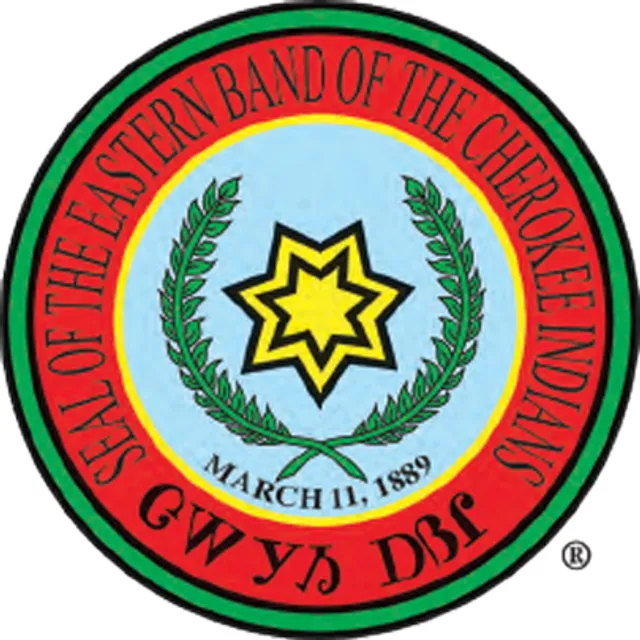
The Eastern Band of the Cherokee Indians
Cherokee people have lived throughout Appalachia since time immemorial. Their towns and settlements came to be broadly situated throughout the Southeast. Today hundreds of thousands of Cherokee citizens are enrolled in one of three federally-recognized, sovereign nations. The Cherokee Nation and United Keetoowah Band of Cherokee are both headquartered in Oklahoma and the Eastern Band of Cherokee is headquartered in Cherokee, North Carolina, on what’s called the Qualla Boundary. The Boundary, located in the Smoky Mountains of Appalachia in North Carolina, is not a reservation; it is land purchased by the Tribe in the 1800s.
Many people associate the Cherokee with the 1830 Indian Removal Act and the Trail of Tears. Tens of thousands from numerous Eastern tribes were forced Westward, suffering traumatizing displacement from ancestral homelands and significant loss of life, health, and property. The Act was enforced by President Andrew Jackson in defiance of U.S. Supreme Court rulings upholding tribal sovereignty. (Read about the Marshall Trilogy, named for Chief Justice John Marshall, West Virginia’s Marshall University is named for him.)
Nearly 200 years have passed and the Cherokee have prevailed. Today the Eastern Band is governed by a democratically-elected Principal Chief, Vice-Chief, and twelve member tribal council made up of two representatives from each of six townships. The tribe pays for its own schools, water, sewer, fire, and emergency services and operates the Museum of the Cherokee Indian. The award-winning Museum strives to “preserve and perpetuate the history, culture, and stories of the Cherokee people,” having helped “revitalize the stamped pottery tradition through the Cherokee Potters Guild; traditional dance by sponsoring the Warriors of Anikituhwa; traditional 18th century Cherokee dress; feather capes; and language.” The tribe welcomes visitors and holds the annual Cherokee Voices Festival in celebration of cultural resilience.